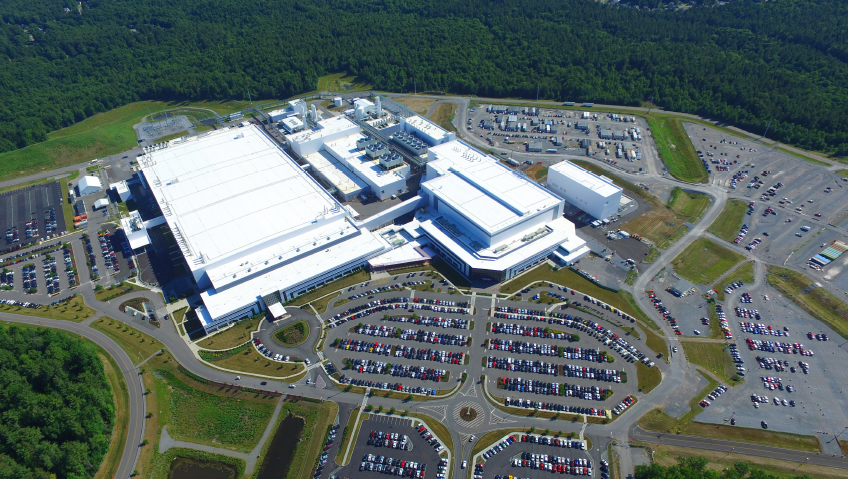The City of Estevan, once Saskatchewan’s best kept secret, is a secret no more. Private investors and the North American green energy community are discovering the innovative developments in clean energy being led by the Southeast Techhub (SETH), located in the industrial park of what’s been dubbed the “Energy City.”
Mayor Tony Sernick, who had been sworn in just a few hours before we spoke, shares with us the excitement, optimism, and positivity he’s seen over the last four years as City Councillor, with the revitalization of the downtown and the energy-related projects under development at SETH. It made him decide to run for the position of mayor, he says, “to keep all of that going ahead.”
He notes that Estevan has been all about energy for 150 years—oil, gas, and coal—and now as the world transitions away from those fuels, the city will continue to be all about energy—nuclear, geothermal, and solar. “We are going to be doing just about everything under the sun to maintain Estevan as the energy city,” he says. Even, as it turns out, using coal.
Reimagining coal for a sustainable future
City Manager Jeff Ward says that, “We fully understand the current federal climate mandates require that traditional coal burning facilities need to be shut down by 2030.” One of Mayor Sernick’s priorities is to ensure the coal-fired electric power generation assets the city has can be used to the end of their life cycle, “but by no means are we putting our heads in the sand because we want to be part of a cleaner, greener energy future.”
A key part of that, he tells us, is identifying how coal by-products—graphite and hydrogen—can play a critical role in achieving a clean energy future while maintaining employment for miners and offering exciting economic development opportunities for investors.
“Our coal is a little different from that found in other parts of the country,” explains Gord More, Executive Director of SETH. “It is prehistoric peat that has been barely fossilized and still has its original organic structure. Under a microscope it has a similar structure as graphite.”
SETH opened in May 2022 with support from the community and provincial and federal governments. It is a registered, incorporated, non-profit organization that acts as a collaboration hub with a mission to inspire and nurture the growth of innovative and technology-based companies in southeast Saskatchewan.
Graphite, More explains, is widely used in industrial lubricants, in the core of nuclear reactors, and in the rods used to control the nuclear reaction. With a renewed interest in nuclear energy, particularly in small modular reactors (SMRs), having a readily available supply of good quality graphite—such as is found in the open pit mines surrounding Estevan where the ground has already been disturbed, making it easy to extract—will be of critical importance.
More tells us that 77 percent of all the graphite in the world comes from China, “and China has now placed an internal tariff on the product, requiring permission from the Communist Party to export it, which they are refusing to do so they can control the world’s markets.” The only other place where North American industry can get graphite is South Korea, “but it’s a synthetic substance and highly toxic. It creates pollution, which defeats the purpose of using it.”
Estevan, Ward tells us, has been identified by the Provincial government and Saskpower as the site for construction of SMRs, with work expected to begin in 2029 with operation by 2034. “If we can get those jobs and construction facilities at the same time, and start using coal in a different way, we can keep the mines operating and maintain those jobs,” he says.
Another project using coal involves the production of hydrogen, which More says is being looked at for passenger vehicles, for aviation, and for farm equipment, with CP Rail needing access to hydrogen now, as it has three hydrogen-powered locomotives.
Where Estevan comes into the equation is that it already has “the world’s only carbon capture coal plant, and that means we have the infrastructure for the recovery and carbon capture sequestration that the world is trying to build.” The city is therefore capable of converting coal to hydrogen that would meet both Canadian and U.S. standards for clean energy.
Researchers at the University of Chicago “have tested our process and our coal, and it passed as green hydrogen, and that’s extremely valuable to the world right now,” says More. “But we need private investors to bring these projects to fruition. We are receiving government funding, but private investors bring understanding and knowledge of the markets they work in, and we need that to make these products successful,” he explains.
“Both projects—graphite and hydrogen—have been de-risked significantly by government money, and we have gotten them to a place where a private investor would feel comfortable knowing they could make a great return on investment.”
Geothermal and solar energy
Geothermal energy is another advantage that Estevan enjoys, as it is sitting at the end of a geothermal line that extends to southern Saskatchewan from where it starts in the Yukon, says More. It is currently under development by the DEEP Earth Energy Company, a privately held corporation looking to provide geothermal resources for power generation, which could be integrated to supply greenhouses, fish farms, and food processing industries.
Then there’s the sun. Southern Saskatchewan has more sunlight hours than any other part of Canada, making solar energy a viable energy alternative for large-scale projects such as data centres, which could use a combination of solar and natural gas. If data-storing servers were to locate in Estevan, their owners would have a competitive advantage in saving on energy costs.
Innovation Centre for Energy Development
Last year SETH partnered with Southeast College’s Centre of Sustainable Innovation (CSI) to create the Innovation Centre for Energy Development (ICED). Its purpose is to provide an “ecosystem for companies and institutions to complete their applied research or product development projects in the region. This in turn will lead to projects being commercialized and manufactured in Saskatchewan, creating new industries, companies and jobs.”
To create that ecosystem, ICED would need to provide a hydrogen hub, says More. While most of the hydrogen created by the gasification of lignite coal would be sold to existing customers, some would be available for product development. A solar-powered data centre would be developed, to “not only provide a reference point for the industry, but also provide computing and AI power for our clients.”
An organic chemistry laboratory is one of the biggest requirements here, as the closest accessible lab is a five-hour drive, in Saskatoon. Currently, three active projects—coal conversion to graphite with The George Washington University; lithium extraction from brine with Legacy Water; and Buffalo Potash—would benefit from a local lab. Finally, having a microgrid would also allow various energy projects to tie into others to mimic a real-world environment, to test and refine their capabilities.
Location, location, location
Not only is Estevan ideally located to take advantage of multiple forms of energy, but it is also in an ideal location to do business. Just 16 km (9.9 miles) north of the U.S. border and equidistant from two urban centers, Regina, Saskatchewan and Minot, North Dakota, Estevan is situated on the central North American trade corridor. Businesses located there can enjoy direct access to markets in 10 U.S. states, as well as markets several hundred miles into Mexico, via the Canadian Pacific Kansas City Railway. The city also has access to the Can-Am and TransCanada Highways, and CN rail access to the east-west Canadian trade corridor, from Vancouver to Halifax.
To capitalize on the anticipated growth as Estevan transitions from being a coal-mining town, Ward says that the city had been eligible for federal funding, some of which was used to revitalize the downtown core, “to create the kind of community we will require if we are to move forward.”
Until eight years ago, the main highway doubled as the city’s main street, but after a bypass was constructed, attention has turned to making the downtown core pedestrian-friendly, connecting it to walking trails, working with the Chamber of Commerce to analyze needs, incentivizing small businesses—such as a coffee shop and a real estate office—to open with tax breaks, and funding existing businesses to refresh and enhance their storefronts.
“There will be a focus on building what works best for our downtown core. We are small, with a population around 10,000, but we are in a catchment of 50,000,” says Ward.
The city also has the aforementioned industrial park with available commercial lots, and within it is Southeast College and SETH, which provides incubation opportunity for small start-ups alongside its larger projects.
“As we transition from coal, we are trying to retool our labour force. We have a lot of coal miners with existing skill sets that would be available for new companies,” says Ward. “If a manufacturing or other light industry plant were to open, we have the people who could convert their skill sets to whatever is needed.”
Quality of life
Families relocating to Estevan will find an excellent quality of life, Ward says. The city has a regional hospital, six schools including a regional, comprehensive high school, and affordable housing.
“People who come here from urban areas to work, including digital nomads, can’t believe all the amenities we have for a city our size,” he says. “We have a $24 million arena/rink in Affinity Place, a world-class golf course that has previously earned the title of Facility of the Year in Saskatchewan, and the Estevan Motor Speedway, which continues to receive accolades. We have ball diamonds and parks, and it is a safe place—great for families.” It looks like sunny skies ahead.






